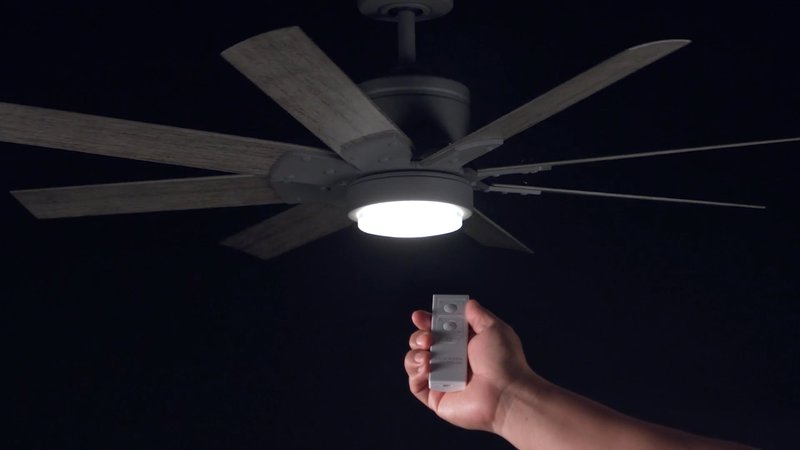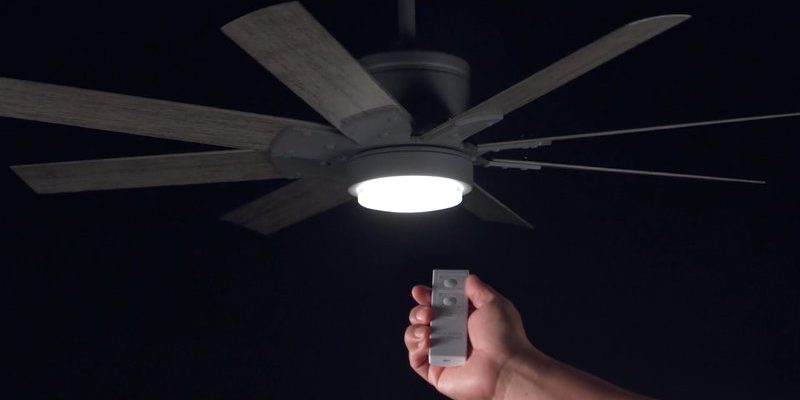
Lutron’s ceiling fan remotes are solid and reliable, but their setup isn’t always as obvious as we’d hope. Programming one isn’t rocket science, but the steps can feel mysterious if you’re new to it. Maybe you’ve just replaced the batteries, bought a universal model, or moved into a place with a Lutron system already installed. No matter the case, getting your remote paired and working is a matter of carefully following a few steps—and a dose of patience. Let’s walk through it together, so you can get back to breezy living.
Understanding Your Lutron Ceiling Fan Remote
Before you dig into programming, it helps to get familiar with what’s actually in your hand. Lutron makes several remote styles—some only control the fan, while others manage both fan speed and light dimming. The remotes work by sending a wireless signal (sometimes called a “code” or “sync signal”) to a receiver unit installed inside your ceiling fan assembly.
Honestly, it can be a little intimidating if you’re staring at a remote with buttons labeled “Fan,” “Light,” “Off,” and a row of speed numbers. Don’t worry—most models work the same way. The programming process is about teaching your fan and remote to “speak the same language,” so one code controls the other.
You might be wondering if it matters whether your remote is an original or a universal replacement. For Lutron, both types usually follow similar pairing steps, but always check the paperwork that came with your device. Some universal remotes require an extra step or have switches inside the battery compartment. If you don’t have the manual anymore, don’t sweat it—most programming steps are very similar across Lutron models.
Preparing for Programming: Safety and Setup
Here’s the thing: before you start messing with anything electrical or wireless, you want to keep safety front and center. Ceiling fans are often wired into your house’s main electrical system. So, if you need to open up the fan housing (which sometimes happens when syncing a new remote), always flip the circuit breaker first.
- Turn off power at the breaker. Don’t just use the wall switch—shut down the power at the electrical box.
- Have fresh batteries. A dying battery can cause all sorts of connection headaches during the pairing process.
- Locate your receiver module. For most Lutron fans, the receiver lives inside the canopy (the big cover at the ceiling). Some remotes pair wirelessly without opening the fan, but if yours has a “learn” button on the receiver, you’ll need to find it.
Take a minute to read the remote’s labels and flip it over to look for any switches or DIP codes in the battery compartment. If there are tiny slide switches or a “reset” button, you’ll use those in the next step. Keep a small screwdriver handy, just in case your fan or remote needs it.
How To Program a Lutron Ceiling Fan Remote
Now for the main event—synchronizing your Lutron remote with your ceiling fan. Don’t rush here. Think of it like pairing new headphones with your phone: you need to get both devices ready to “talk” at the same time.
Step 1: Insert fresh batteries. Open the battery compartment, usually at the back of the remote. Make sure the batteries are placed correctly, with the positive and negative ends matching the diagram.
Step 2: If your fan’s receiver has a “learn” button, locate it. This button is often inside the ceiling canopy. If you spot one, keep your remote nearby, as you’ll need to press both buttons in quick succession.
Step 3: Activate pairing mode. On most Lutron remotes, press and hold the main “Fan” button and “Light” button together for about 5–10 seconds until an indicator light flashes. If your remote has a dedicated “Pair” or “Sync” button, use that instead.
Step 4: Press the “learn” button on the receiver (if required). With the remote in pairing mode, press and release the “learn” button on the fan receiver. You should see the light blink or the fan blade jiggle—a sign they’re syncing.
Step 5: Confirm the connection. Try pressing the fan speed and light buttons on your remote. If the fan spins up or the light dims, you’re golden. If not, repeat the steps slowly. Sometimes timings have to be just right.
Some Lutron remotes and receivers work without a physical “learn” button. In those cases, just holding the pair or sync button on the remote does the trick. If you miss the window, don’t worry—reset both devices by pulling the batteries out and starting again. Patience is your friend here.
Troubleshooting Lutron Remote Programming Problems
So, you followed all the steps, and the fan still isn’t responding? Welcome to the troubleshooting club. Honestly, this happens more often than you’d think, even with a brand-new system. Here’s where a little detective work helps.
First, check the batteries. It’s easy to overlook, but weak batteries cause 80% of remote headaches. Swap in fresh ones, even if the indicator light still blinks.
Next, verify range and signal strength. Lutron remotes aren’t meant for long distance marathons. Try standing closer to the fan. Metal ceiling plates, thick walls, or electronic interference can sometimes block the remote’s code.
Examine the receiver and wiring. If you had to open the fan canopy, double-check the receiver is sitting snugly in place and the wires haven’t come loose. Loose wires mean no signal gets through—no matter how many times you pair or reset.
If none of these fixes work, consider resetting the remote and receiver completely. Remove the batteries from the remote, wait 30 seconds, and re-insert them. Then re-do the programming steps above. Sometimes, things just need a fresh start to shake hands.
Lutron Remote Codes, DIP Switches, and Universal Models
You might be wondering, “What’s with all these mention of codes and switches?” Some Lutron fans use old-school DIP switches to set the code the remote and receiver use to talk. These are tiny white or black switches inside the battery case, or sometimes in the fan receiver.
Matching the Code: For DIP switch models, make sure the switches inside the remote and the receiver match exactly. The switches are either ON or OFF—if they’re mismatched, the fan ignores your remote completely. Use a small screwdriver to flip them if needed.
Universal remotes often have a sliding switch to set the type of fan, or extra code settings. If your universal model refuses to pair, double-check the settings. Don’t forget to check the manual for your fan or the receiver if you can’t get a response. Sometimes, Lutron systems require a quick manual reset—check if there’s a “reset” or “sync” button on the device.
If you’re using a universal remote on a non-Lutron fan, keep in mind that not all models will pair properly. In that case, returning to a brand-specific Lutron remote might save you the headache.
Resetting Your Lutron Ceiling Fan Remote
Sometimes, nothing works until you wipe the slate clean. Resetting a Lutron remote is usually a simple process, and it gives both the fan and remote another shot at syncing up. Here’s how to do it:
Remove the batteries from the remote and leave it off for about a minute. While you’re waiting, flip the circuit breaker off and back on to reset the fan receiver, too—just be careful if you’re opening up the canopy.
Replace the batteries and hold the pair or sync buttons again, as described in the programming section. Some Lutron remotes may have a dedicated reset button inside the battery compartment—press and hold it for five seconds if you see one.
If your remote has DIP switches, flipping them all to the opposite position, then back to the original, can “clear out” old codes stuck inside the system. Then try syncing again.
A full reset wipes any previous programming and lets you start from scratch. If you’ve inherited a system with old codes, this is the best way to claim it as your own.
When To Call Lutron Support (Or Try an Alternative)
Let me explain—sometimes, despite your best effort, the remote just won’t pair. Maybe the receiver is fried, a button isn’t responding, or a previous owner changed something you can’t access. At this point, there’s no shame in calling in backup.
Lutron customer support is known for being helpful with stuck remotes and code troubleshooting. Before you call, write down your remote’s model number and any error codes or behaviors you’ve noticed (flashing lights, stuck buttons, etc.).
If you’re feeling especially frustrated, you could consider upgrading to a newer remote, or even swapping to a Wi-Fi or app-based fan control. Modern Lutron systems sometimes offer smart home integration—imagine running your fan from your phone or a voice assistant. If you’re in a pinch, a universal remote might tide you over, but nothing beats having the original matched set.
Tips for Long-Term Use and Problem Prevention
Honestly, the best way to avoid future headaches is regular, simple maintenance. Start by changing the batteries every six months—mark your calendar or set a phone reminder. Store your remote somewhere easy to find (no more scavenger hunts down the couch cushions!).
Wipe the receiver and remote clean with a soft, dry cloth every so often, especially if you live somewhere humid. Moisture and dust don’t mix well with wireless signals. If your remote starts acting sluggish or intermittent, replace the batteries and re-sync before assuming something bigger is wrong.
For homes with multiple fans, label your remotes or use colored stickers. That way, you won’t accidentally mix up remotes and cause frustration next time you’re programming. Small habits save a lot of time in the long run.
Wrapping Up: Enjoying a Fully-Functional Lutron Ceiling Fan Remote
So, that’s the journey—sometimes smooth, sometimes a little bumpy, but always doable with a bit of patience and know-how. Programming your Lutron ceiling fan remote might seem mysterious at first, but once you walk through the process, it’s a lot like teaching two gadgets to share a secret handshake. With a few careful steps, fresh batteries, and maybe a reset or two, your fan and remote can get back in sync.
Next time your ceiling fan gives you the silent treatment, you’ll know exactly how to reprogram, reset, or pair your remote without breaking a sweat. Here’s to cool breezes and a little bit of tech triumph.
